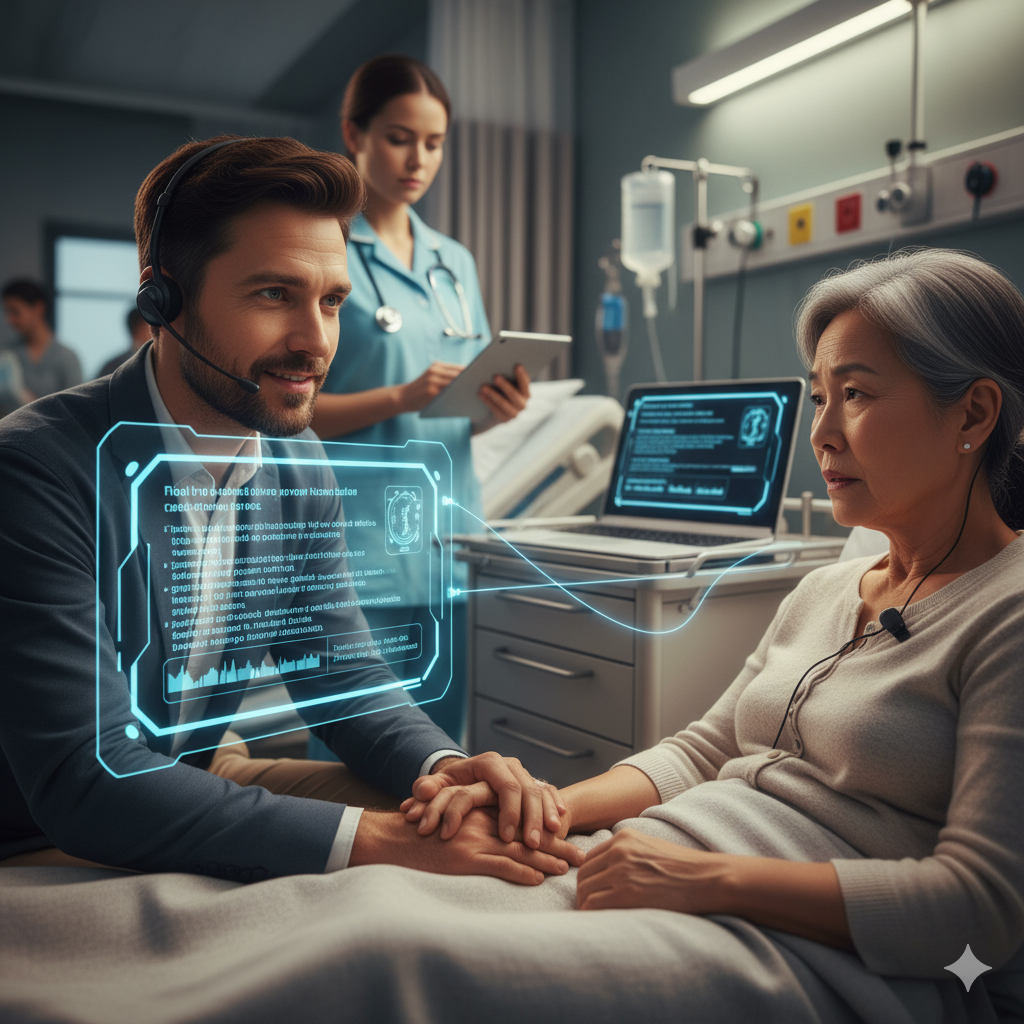Humans and AI
Where is the balance between technology and humanity in healthcare?
AI is currently on everyone’s lips. Everyone is thinking about it. Some see it as a positive development, while others are on the opposite end of the spectrum and would prefer to go back 30 years in time.
I work as an interpreter/translator in Tenerife. For the first 10 years, I worked in a private hospital in the south of Tenerife, and for the past 6 years, I have been self-employed.
Hospitals usually evoke negative feelings. Falling ill or having an accident while on holiday is obviously not something you want to happen. Living abroad, not yet fluent in the language and falling ill is obviously not ideal either.
This is where an interpreter comes in handy to overcome language barriers – to understand what is being said and to be understood.
How can we as humans work together with AI?
The human aspect: Why empathy is irreplaceable
The power of body language and emotion:
A human interpreter does more than just translate words. He or she reads the body language of both the patient and the medical team. A reassuring hand on the patient’s shoulder or a friendly look helps to give the patient confidence in an unpleasant situation. Facial expressions and gestures often say more than words.
An important part of making a diagnosis is the initial conversation between doctor and patient. With a broken leg, it is clear what is wrong. However, if the patient has a complicated medical history, it is important that the doctors fully understand this so that they can take the right action.
Cultural sensitivity and trust:
A patient abroad is in a doubly vulnerable position, both physically and culturally.
The interpreter has knowledge of the local culture, customs, habits and perceptions. This can help to eliminate misunderstandings and prejudices. It creates a bond of trust that a machine can never provide.
Mediation and reassurance:
A human interpreter is a mediator. He or she can translate complex medical language into understandable, simple terms. In a stressful situation, they can calm the patient and convey the information at a slower pace. This reassuring presence, human contact and embrace is crucial for the well-being of the patient and his or her family members.
The role of AI: Speed versus human capacity
AI is essentially a supercomputer that has access to all available information simultaneously and can filter this information in the shortest possible time. The capacity of AI is much greater than that of the human brain.
AI as a necessary aid:
In a crisis situation, when no interpreter is available, an AI translation can be a lifesaving bridge. For quick questions or basic information (e.g. ‘Where does it hurt?’ or ‘Do you have any allergies?’), an app can be a godsend. This is about efficiency, not empathy.
Cognitive load under stress:
This is one of the main arguments against the primary role of AI. A patient who is in pain, confused or panicking does not have the mental capacity to operate an app, speak clearly or check a translation. The human interpreter takes this burden away and ensures that doctors and nursing staff are informed of the medical history as quickly as possible.
Risk of losing nuance:
A literal translation by AI could be dangerous. The translation of ‘I feel a little nauseous’ can be given a completely different meaning than intended when AI translates. A human interpreter would notice the nuances in the voice, be able to ask further questions and pass on the information to the doctor or nursing staff. This also applies to interpreting phrases used in colloquial language.
Where do we want to go? A collaboration between humans and machines
AI is a tool, not a replacement:
Human contact remains the most important aspect of treating and healing people. AI can be an extremely useful tool to bridge the gap while waiting for a human interpreter, but it can never replace the warmth, insight and comfort of a touch or a hug.
The psychological dimension:
The presence of a fellow human being, in the form of an interpreter, contributes to psychological healing, which is just as important as physical healing. It is important that the patient does not feel treated as an object communicating through a machine, but as a human being with fears and uncertainties.
What does the future hold?
That is the question everyone would like to see answered. Developments are continuing and perhaps in the near future it will be possible to communicate with direct translation without the need for an app.
Certainly in stressful situations, such as illness and accidents, human contact will be of the utmost importance. After all, it is not just about translation but also about interpretation.

